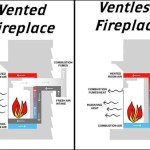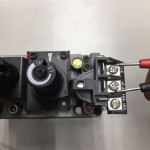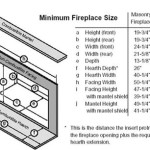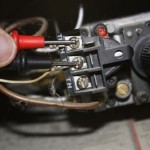How To Baby Proof a Rock Fireplace
A rock fireplace offers a unique aesthetic appeal to a home, often serving as a focal point in a living space. However, the natural ruggedness and uneven surfaces of rock fireplaces present specific safety challenges when a baby or toddler is exploring their environment. The goal of babyproofing a rock fireplace is to mitigate potential hazards without compromising the fireplace’s structural integrity or aesthetic value. This article provides detailed guidance on how to address these safety concerns effectively.
Assessing the Risks Posed by a Rock Fireplace
Before implementing any babyproofing measures, it's crucial to thoroughly assess the specific hazards posed by a particular rock fireplace. These hazards generally fall into several categories: sharp edges, uneven surfaces, protruding rocks, access to the firebox, and the overall stability of the structure.
Sharp edges and uneven surfaces are inherent characteristics of rock fireplaces. The natural variations in the rocks can present a significant risk of bumps, bruises, cuts, and scrapes as a child explores the area. Protruding rocks can pose a tripping hazard, especially for toddlers who are still developing their walking skills. A close examination of each rock and the spaces between them is necessary to identify potential pinch points or areas where a child could become stuck.
Access to the firebox is another primary concern. The opening to the firebox, even when cold, represents a potential hazard. Children may attempt to reach inside, potentially encountering sharp edges, ash, or other debris. Additionally, the flue and associated hardware can become hot during and after fireplace use, creating a burn risk.
Finally, it's important to assess the overall stability of the rock fireplace structure. While most fireplaces are built to code and should be structurally sound, it’s recommended to visually inspect the mortar between the rocks for cracks or signs of degradation. If there is any concern about the fireplace's structural integrity, consulting a qualified mason or structural engineer is advisable.
Implementing Protective Barriers and Padding
Once the risks have been thoroughly assessed, the next step involves implementing protective barriers and padding to minimize potential injuries. This typically involves creating a physical barrier around the fireplace and padding any sharp edges or corners.
A fireplace fence or barrier is often the most effective way to prevent a child from accessing the fireplace altogether. These barriers are typically made of metal or durable plastic and can be freestanding or mounted to the wall. When selecting a fireplace fence, it is essential to choose one that is specifically designed for use around fireplaces and meets safety standards. The barrier should be tall enough to prevent a child from climbing over it and should have a secure locking mechanism to prevent them from opening it.
For rock fireplaces, finding a barrier that fits snugly against the uneven surface can be challenging. Flexible barriers that can be adjusted to accommodate irregularities are often the best choice. Some barriers come with extension panels that can be used to create a custom fit. When installing the barrier, ensure it is positioned far enough away from the fireplace to prevent a child from reaching through the gaps.
In addition to a barrier, padding can be used to soften sharp edges and corners. Edge and corner guards made of foam or rubber can be applied to the rocks to minimize the risk of injury. These guards are available in various shapes and sizes to fit different types of edges and corners. When selecting padding, choose a product that is non-toxic and easy to clean. Ensure the padding is securely attached to the rocks using a strong adhesive to prevent it from being pulled off by a child.
For protruding rocks, consider using custom-made padding or wrapping them with thick fabric or foam. This will help to cushion any impact and reduce the risk of injury. Be sure to regularly inspect the padding to ensure it is still in good condition and replace it if it becomes damaged or worn.
Securing the Firebox and Maintaining Fire Safety
Preventing access to the firebox is crucial for babyproofing a rock fireplace. This can be achieved through several methods, including installing a fireplace screen or door, using a firebox cover, and teaching children about fire safety.
A fireplace screen or door provides a physical barrier to prevent children from reaching into the firebox. Screens come in various styles and materials, but it's essential to choose one that is both sturdy and heat-resistant. The screen should fit snugly against the fireplace opening and have a fine mesh to prevent embers from escaping. A fireplace door offers an even more secure barrier, as it can be locked to prevent children from opening it. However, doors can be more expensive and may require professional installation.
A firebox cover is another option for preventing access to the firebox. These covers are typically made of metal or durable plastic and are designed to fit snugly over the fireplace opening when it is not in use. Firebox covers can be particularly useful for fireplaces that are not used frequently, as they provide a visual reminder that the firebox is off-limits.
Even with physical barriers in place, it's important to teach children about fire safety. Explain to them that the fireplace is hot and dangerous and that they should never touch it or play near it. Use age-appropriate language and demonstrate the potential dangers of fire. Supervise children closely when they are near the fireplace, even when it is not in use.
Regularly inspect the fireplace for any potential hazards, such as loose bricks or damaged mortar. Keep the area around the fireplace clear of flammable materials, such as curtains, rugs, and furniture. Install smoke detectors and carbon monoxide detectors in the home and test them regularly to ensure they are working properly.
It's important to note that babyproofing measures are not a substitute for parental supervision. Children should always be supervised when they are near a fireplace, even when it is babyproofed. By implementing these safety measures and maintaining constant vigilance, parents can create a safer environment for their children while still enjoying the warmth and beauty of a rock fireplace.
The implementation of these measures can significantly reduce the risk of injury and create a safer environment for young children. By taking a proactive approach to babyproofing, parents can enjoy the aesthetic benefits of their rock fireplace with greater peace of mind.
Finally, remember that babyproofing is an ongoing process. As children grow and develop, their abilities and interests will change, and it may be necessary to adjust babyproofing measures accordingly. Regularly reassess the risks posed by the rock fireplace and make any necessary adjustments to ensure the safety of your children.

How To Baby Proof A Fireplace Diy Hearth Cushion Simply September

Diy Contoured Fireplace Cover Babyproofing Seating

Fireplace Gate Baby Proof Your Hearth

Diy Fireplace Babyproofing

How To Baby Proof A Fireplace Diy Hearth Cushion Simply September

Bean Bag Bed With Built In Blanket And Pillow Others 18319 Clothinggers River Rock Fireplaces House Design Stone Fireplace

Babysafetyfoam Com Baby Proofing Fireplace Hearth Guard Bumper Pad Safety Cushion Cover Protection

How To Baby Proof A Fireplace Diy Hearth Cushion Simply September

How To Baby Proof Fireplace With A Safety Screen

How To Baby Proof A Fireplace Step By Guide
Related Posts








